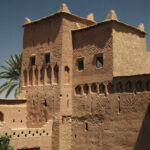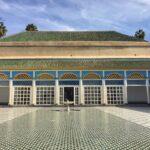The Hassan second mosque exists in Casablanca city. It was built in August 30 in 1993, the mosque Hassan second is the biggest one in Morocco. The second one in Africa and the thirteenth in the world. The minaret of Hassan II mosque is affected by the Andalusian style of decoration. Its height is 210 meters in the sky (689 feet). Hassan II mosque is one of the touristic destinations that visitors from different places in the world tend to visit.
Agency Location
- DR, 590 Bd Bouakkaz, Marrakech 40000
Phone Number
Email us
- © 2022 deserttourinmorocco.com All Rights Reserved.


